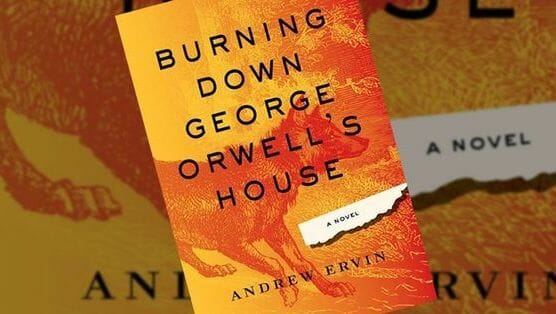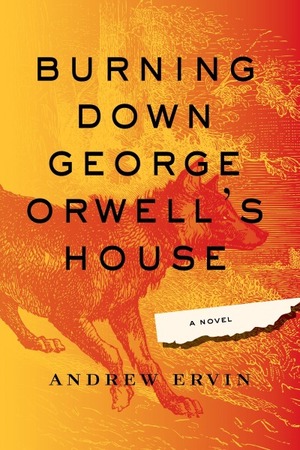Burning Down George Orwell’s House by Andrew Ervin
Pages from a Cold Island

In the opening chapter of Frederick Exley’s Pages from a Cold Island, we find “fictional memoirist” Exley drinking his breakfast in a Florida bar and penning lascivious come-ons to the earnest co-eds who have written him adoring fan mail regarding A Fan’s Notes, his acclaimed meditation on failure in America. Exley spends much of the rest of the book chasing the ghost of his literary hero, Edmund Wilson, through their nearly neighboring upstate New York hometowns. Exley sets off in search of the “stone house” Wilson famously used to clear out distractions, isolate his mind and do his best writing. Tracking down the physical center of Wilson’s inspiration—or at least his self-discipline—doesn’t provide Exley with much of either. The sad thing about achieving a measure of immortality through A Fan’s Notes was that Exley had to spend another 20 years running out the clock just to get there.
 George Orwell found his stone house in the Scottish Hebrides in 1946. Flush with the success of Animal Farm but devastated by the death of his wife, Orwell fled post-war London for the sparsely populated island of Jura. There, in an isolated farmhouse called Barnhill, he wrote his final novel and dystopian masterpiece, Nineteen Eighty-Four. Barnhill proved more felicitous for Orwell’s writing than the damp air of Jura did for his health. Diagnosed with fibroid tuberculosis, Orwell spent most of his time in British hospitals after Nineteen Eighty-Four’s publication in 1949, and he died less than a year later.
George Orwell found his stone house in the Scottish Hebrides in 1946. Flush with the success of Animal Farm but devastated by the death of his wife, Orwell fled post-war London for the sparsely populated island of Jura. There, in an isolated farmhouse called Barnhill, he wrote his final novel and dystopian masterpiece, Nineteen Eighty-Four. Barnhill proved more felicitous for Orwell’s writing than the damp air of Jura did for his health. Diagnosed with fibroid tuberculosis, Orwell spent most of his time in British hospitals after Nineteen Eighty-Four’s publication in 1949, and he died less than a year later.
In Andrew Ervin’s wry and engaging first novel, Burning Down George Orwell’s House, Orwell-obsessed advertising executive Ray Welter flees the wreckage of his marriage and the fallout from his latest ad campaign for a six-month stay on Jura as Barnhill’s sole tenant. There he encounters a host of off-kilter characters who, for the most part, want nothing to do with an outsider who invades their insular world with little ostensible purpose. The irony of the book’s title (besides the “Burning Down” part—sorry, Brock Clarke fans) is that, despite its famous associations, Barnhill is only marginally George Orwell’s. Predominantly inhabited by lifelong residents who can trace their lineage on Jura back for eons, Jura appears, in Ervin’s telling, to have never warmed to its famous temporary resident, or to the literary tourism Orwell’s connection to the island has inspired.
Ray’s reasons for taking up residence at Barnhill are muddled at best, although like Exley in his search for Edmund Wilson, he does arrive with high hopes for the transformative possibilities of an isolated mind. His pre-occupation with Nineteen Eighty-Four has shaped his life in several ways. He’s less concerned with Orwell’s vision of political totalitarianism than the subtler ways in which 21st-Century first-world denizens have become “enslaved to the system,” mistaking compulsive mass consumerism for an orgiastic triumph of will:
Orwell had predicted everything. It was uncanny. His invention of Big Brother had come to fruition in the form of a vast network of conjoined consumers and Ray now understood that he was one of them. How many times had he caught himself wandering through the mall and spending money as a form of entertainment? He surfed the web and purchased things he didn’t need in order to distract himself for a few moments from all the bad shit on the evening news. He had been marketed to so constantly and so effectively that he stopped noticing it—until he read Nineteen Eighty-Four.
-

-

-

-

-

-

-

-

-

-

-

-

-

-

-

-

-

-

-

-

-

-

-

-

-

-

-

-

-

-

-

-

-

-

-

-

-

-

-

-








































